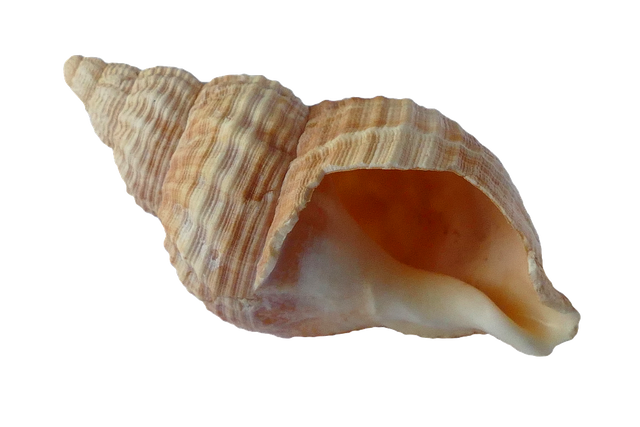Why Don't We Use Microphones To Generate Electricity?
Yes, this does sound a bit strange, but hear me out. The answer "microphones" was just the surprising end result when I thought about something else...
A few years back, a wind generator system by a Dutch engineer was in the news. Here is a video about how it is supposed to work:
Although there is no functioning prototype yet and there probably never will be one, I got curious about it and went through the thesis. In it - I am neither an engineer nor physicist - the inventor Dhiradj Djairam proposes that the system would work with wind speeds of 10kph or more. That is not much, it's in fact just a little more than a quick walking speed.
The idea itself is intriguing, especially since it solves a couple of notorious problems wind energy generators usually have. The systems biggest problem is probably the needed nostrils to spray water into the air which need a lot of optimizing, which is expensive and full of risks. No-one touches that since there is a viable alternative in the form of the current generator technology.
My interest was less in the system itself, but it was the starting point of further thoughts about the problem of so-called renewable energy production.
Thought Number One: What If You Don't Use Wind To Blow Away But Something Else That Is In Motion Naturally?
Todays energy production is based on bringing something in motion to extract parts of that motion and transfer it into other forms of energy:
- In the combustion engine gasoline explodes and brings cylinders into motion
- Nuclear energy brings water particles in motion (aka heats them up) so they push against the wings of a generator
- Generating solar energy works by putting light sensitive materials into the sun where the incoming light brings the molecules into motion which gets transmitted into an electrical system.
It's not different wit wind either and my thought was: Why not using sound instead of wind?
Sound is everywhere and it can be very constant. Just think of forests or rivers or a road with notoriously much traffic (not to speak of tunnels!). Noise is everywhere and no-one harvests it although it would be very simple.
All you need is a string in the length of the expected sound and that's it and as soon as the sound occurs, the string starts vibrating. If you put water on the sting like in the Ewicon system, the vibration of the string will vibrate the water away. It's the same but without wind.
The principle should work. But what is with reality, would there be enough vibrations?

Can you hear the waves of the sea?
The Biggest Question Is: How Much Does Something Vibrate?
The answer lies in the physical unit Hertz, which is the number that says how much something vibrates, respectively, how often a string goes up and down per second. When a string creates a sound of 400 Hz, then this means, the string goes up and down 400 times per second. 800 Hz equals 800 times up and down. In this YouTube Video, you can listen to the entire band that we can hear and I would say, the noise of a river or a road is somewhere in the area of 250 Hz. Those 250 Hz mean that you get 15,000 vibrations per minute and 900,000 per hour.
The next question is how "far" does the string go in that time if you add up all the up and down swings?
Of course, the degree to how far a string goes depends on the volume of the sound. One string alone in nature surely wouldn't go far, but if you add a reflector that collects and focuses a lot of the surrounding sound to the string it will surely vibrate a lot stronger.
Ideal is probably a shell because it does not just reflect sound but also distorts it to one frequency.
I am sure there are more and better ways to focus and increase the vibrations and distort them to one frequency. It's just to give you an idea of how it might look and work. To calculate the "distance", the string goes I will take 1 cm as distance from one end of the swing to the other. That is not much and is probably what you even get from a Cello. This means, the calculation for the equivalent of wind speed goes:
900,000 x 1 cm / 100,000 = 9 kph
At the end, you actually get to a result that comes close to the proposed 10 kph for the Ewicon system which are needed to make it work. Add some improvements to the whole system and you will surely get wind speed equivalents that are by far higher than the 9 kph.
The best thing(s) about it: You could not just built it where there is noise but no wind, but also where there is wind, because why not using the wind as a means to create the needed sound? A second advantage would be the much higher reliability when it comes to the usage of the capacity. While wind is highly volatile, sound is much more constant. At the end, it would also be a profitable way to isolate noise sources like highways and road segments with a lot of traffic.
But is the Ewicon system really necessary for that or is it somehow possible to cut the middle-man?

A wind-based sound creator
Thought Number Two: Why Using The Detour Via The Complex Water Drop System When You Can Just Use Copper Strings And Add A Magnet To Them?
Everyone has plenty of copper wires at home and while they may not be much of use as a vibration tool because of the rubber around them, it is easily possible to use copper wires as strings. Of course these strings have to be in a closed circuit, but that is a given, I hope.
When it comes to the other component, the magnet, it is important to align it correctly to make sure, the electrons will be massaged in a way that it creates a current (an alternating by the way). But that is basically it. To complete the whole machine, you add a shell-like reflector and then you wait for the noise to come.
This is a fantastically simple apparatus and its lack of complexity indicates that it would be very cheap and reliable. Even if one unit just produced a few Watts, the low costs for the product and its maintenance indicates that it would be profitable anyway:
Wire, magnet and reflector cost together maybe 1 Euro and you can surely use the thing 10 years without having to reajust something. If it produces an average of (guessed) 0.1 Watt, at the end of the 10 years that is equal to 8,76 KWh, which is equal to about 11 Cents per KWh. At least in Germany, that is competitive and compared to other renewable energy sources, it is almost unbeatable - and this is just a conservative example without improvements or industral scale effects.
I really wonder why no-one uses this method, especially since the technology is well established as "microphone". It seems like a no-brainer to me.

Presented to you by Kolour Paint;-)
I have a faint memory of people talking about converting ambient noise into energy years ago. I think the problem is, you end up with huge arrays that would just be an eyesore collecting less energy than what some wind turbines would do.
Of course, Tesla believed that there was energy all around us and it just needed to be focused and collected.
Thanks for the answer. So far I only searched for it in German, but using English I actually got a couple of interesting hits like this here on YouTube or a PDF with spreadsheets about harvesting noises.
The point is, they all try to use sophisticated systems like crystals or nano tubes with electric qualities. That sounds great if it works, but it is also very expensive and ineffective because of the lack in size. This means, they aren't competitive outside of small autonomous and specified areas.
What I have in mind is more a cheap and simple brute force approach that potentially can produce large quantities of energy as it is (theoretically) intended with the Ewicon system, since the specifications are comparable.
It seems as if no-one sees the potential or at least has tested it and came to the conclusion that it is inefficient.
Just remember, nature abhors a vacuum. If you convert that sound wave energy into electrical energy, there might be issues.
This post has received a 5.56 % upvote from @sleeplesswhale thanks to: @steem-buzz.
There's just not enough energy in "sound", that's the simple answer.
The amount is only one of three aspects to consider. The other two are the reliability and the costs of extraction. Both are much better than the circumstances of other renewable energy sources and I am not sure if the amount really is so small. The comparison to the Ewicon indicates that it might be enough.
I quick search turned up this:
Our ears are very very sensitive. Sound also adheres to the inverse square-law which ends up meaning you need to be close the thing that's actually making the sound for it to be worthwhile. The emitter is vibrating itself and it would probably be better to skip the conversion to and from sound and just harness the vibrating thing directly. So we have ideas like capturing the kinetic energy of footsteps on floor, or similar.
I get it that it appears there's a lot of energy out there to harvest from "natural" sounds but it's super low energy over all, otherwise things would be ripping apart all the time.
That makes sense. Thanks for looking it up.